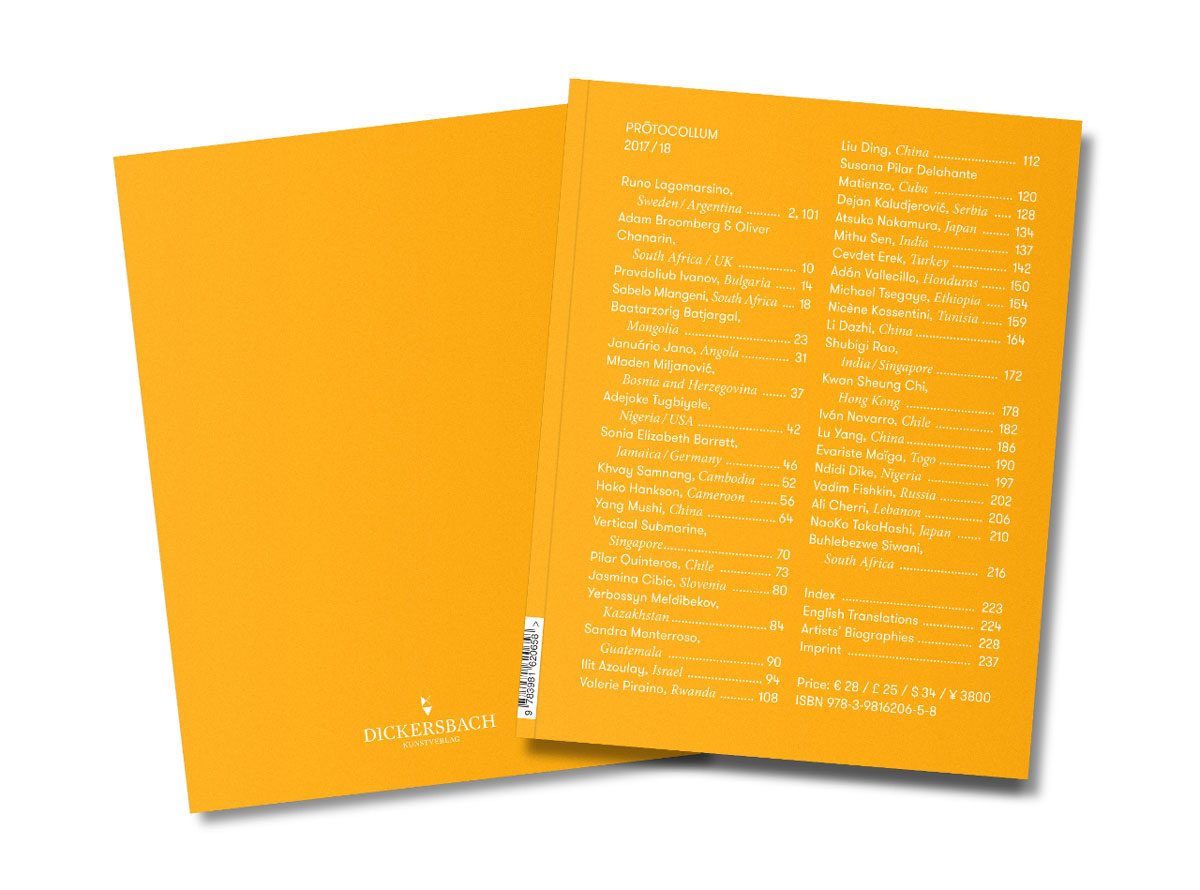Handmade Disruptions
closeThe formal naiveté and playful character of Pilar Quinteros' works conceal an astute and sensitive articulation of complex issues that are related to the inherent histories and dynamics of the places where she intervenes. Generally making works for public spaces, her pieces benefit from this apparent formal innocence to involve passers-by on issues linked to social, economic, and political processes that permeate the site’s history and connect them to comprehensive and complex urban dynamics.
Pilar Quinteros, Lago Bulo, 2016, paper, paint and video, variable dimensions, photo by Maria José Catalan
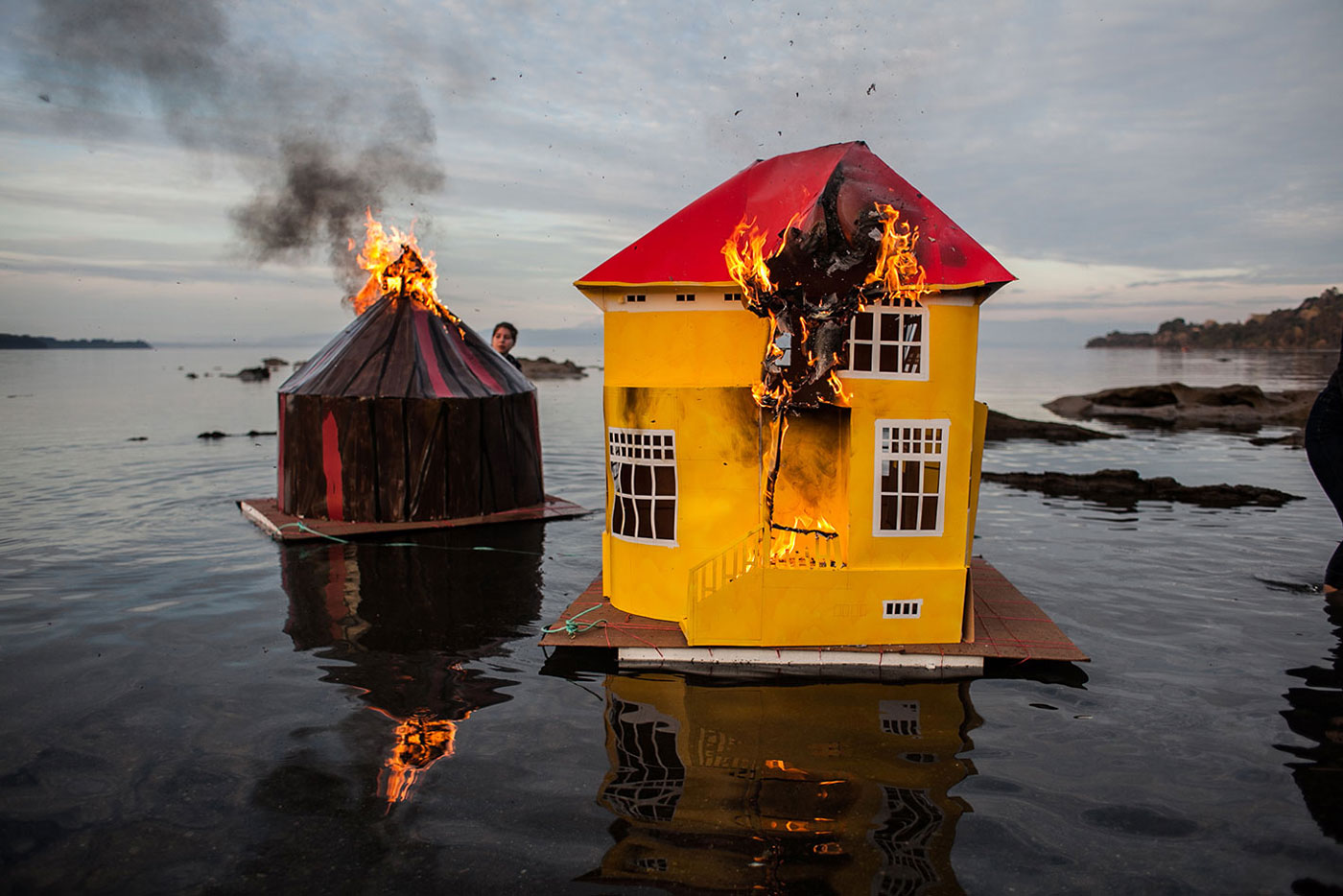
Although Pilar is fundamentally driven by a great curiosity and affective relationship with the places where she operates, one could also interpret her work as an instinctive reaction to the socio-spatial effects of the urban ‘functionalism’ brought about by Chile’s economic boom. It resulted in an accelerated mutation of cities, a process that has not only put in crisis their architectural heritage, but has also fragmented and decimated a set of communitarian memories associated to buildings and places that no longer exist. The uneasiness caused by this experience has carved recurrent features in Pilar's work, based on the dichotomies between absence and presence, construction and destruction, and between what existed and what was only imagined.
These concerns are tested and communicated through a direct and often unauthorized action in public space. The artist chooses (spatial and temporal) gaps of the city, its voids, interstices and absences. There, she reconstructs missing urban elements, duplicates existing ones, reconstructs large fragments of buildings that have already been destroyed or never completed and puts them where they would have been, builds 1:1 scaled prosthetics for semi-destroyed buildings, invents traces of other times and civilizations and juxtaposes them with today's spaces, among many other operations that are midway between fact and fiction, between rigorous research and a great dose of intuition.
Pilar Quinteros, Reconstrucción Estación Pirque, 2010, white cardboard and video (20'03''), 300 × 600 × 60cm
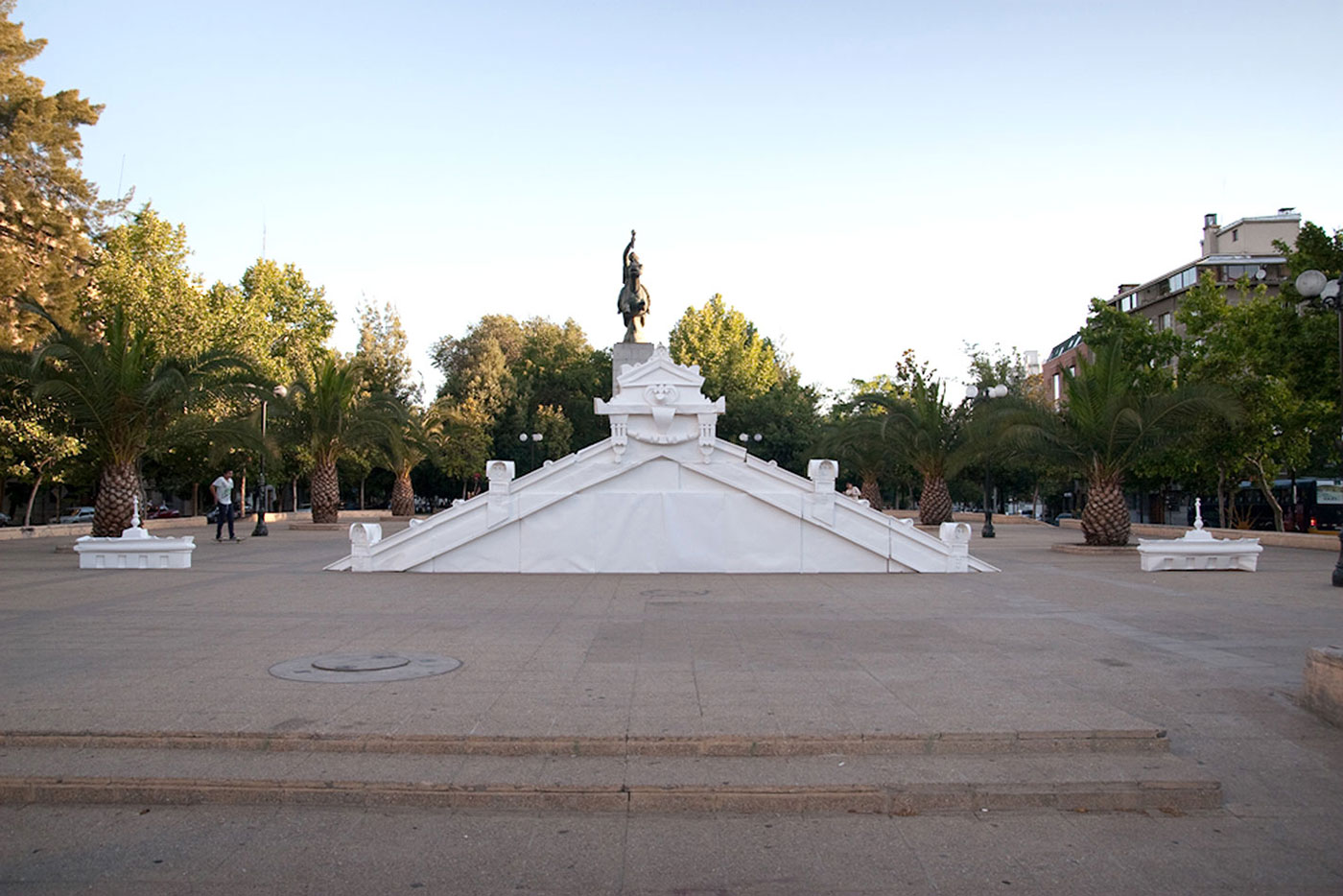
In the production of her pieces Pilar uses common materials that are easy to handle with her own hands, such as cardboard, plastic and fabric. For her it is extremely important to have a total involvement in the manual making of her works. This commitment ensures that the work’s final form carries her unmistakable personal calligraphy. The formal pulsation given by such manual construction gives her sculptures drawing-like qualities. Drawing is the basic tool of Pilar’s creative process, so the work ends where it begins, completing a full circle. The construction of her large-scale pieces is almost entirely carried out in the studio, and these are subdivided into smaller parts, which facilitate their making, transportation and assembly outside. By bringing together friends and volunteers to help her carry the various pieces through the streets and to assemble them together in the determined site, the artist transforms the practical inevitability of transportation into an allegorical event which disrupts the city's daily flux.
Pilar Quinteros, Friendship of Peoples Fountain, 2014, cardboard and video (41'55''), 500 × 600 cm
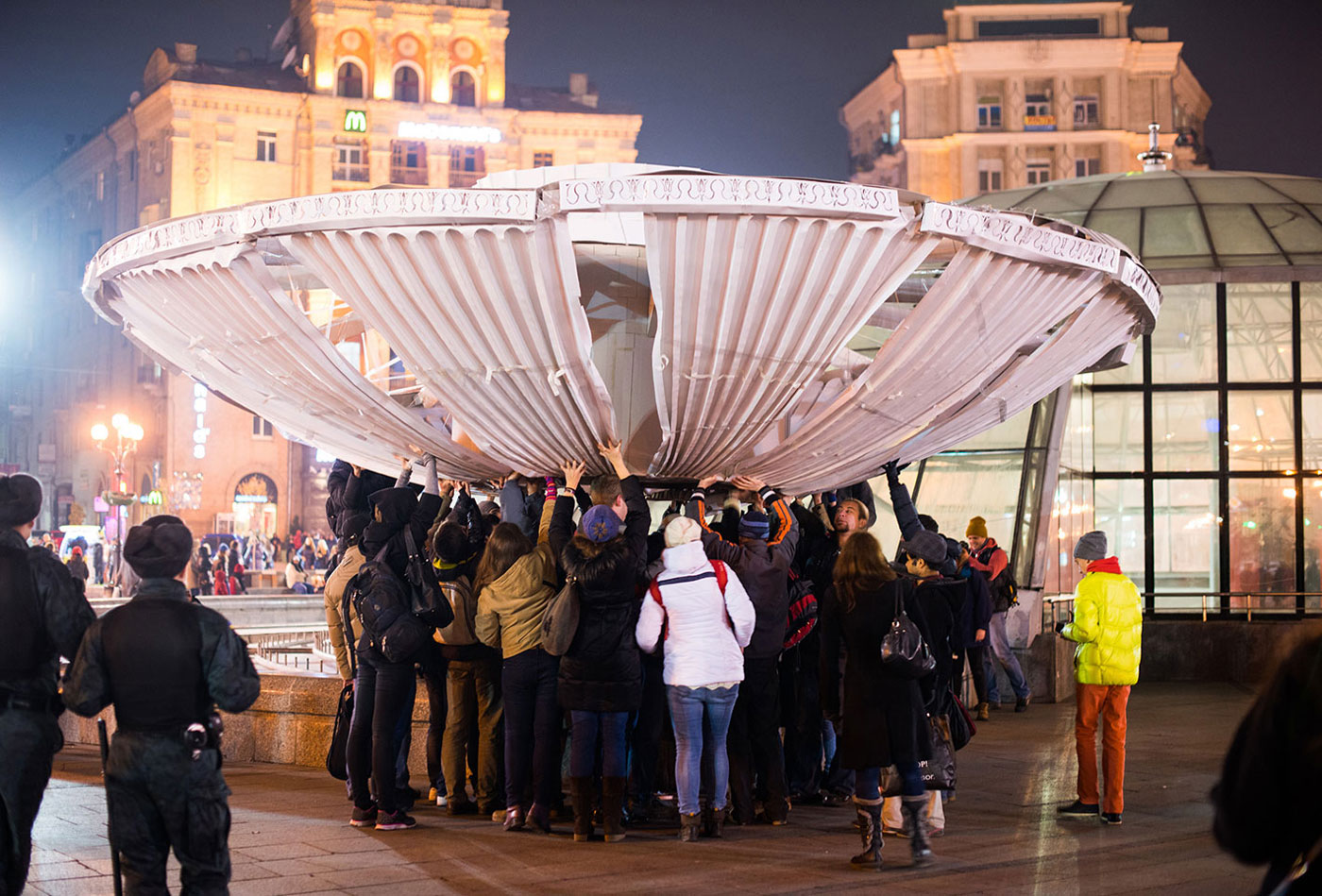
Throughout this process video is a central element, not only because it documents all stages of the work but because it is a personal record of the artist’s endeavors. This documentation has a great affective meaning for Pilar, especially because almost all of her works are fleeting, being easily destroyed due to the fragility of their materials and construction. The inherent (self-)destruction of the works, performed in the public space, contradicts the fixity and didactic logic of monuments. It also challenges the illusory idea of permanence that they claim, putting it against the volatility, mutability and perishability of our collective spaces, buildings and beliefs.
Pilar Quinteros, Smoke Signals, 2016, plaster, grass, wood and video (70''18'), 400 × 250 × 80 cm
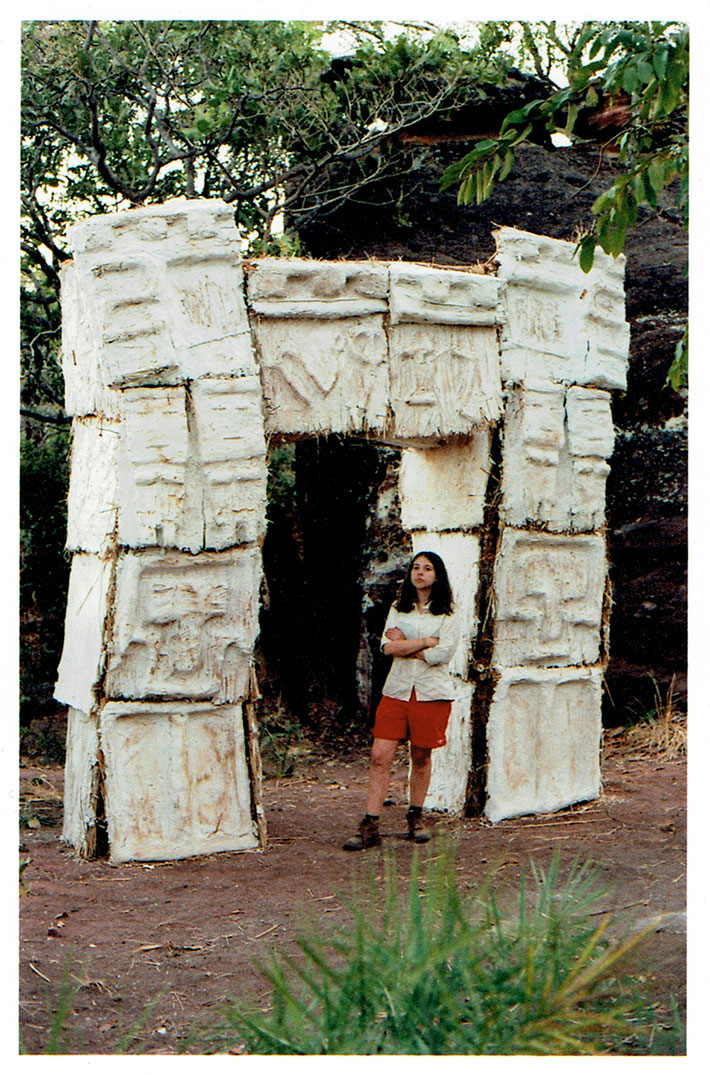
This text was published in PRŌTOCOLLUM: Global Perspectives on Visual Vocabulary 2017/2018, Dickersbach Kunstverlag, Berlin, Germany, pp.73-77.
RŌTOCOLLUM. Global Perspectives on Visual Vocabulary 2017/2018
